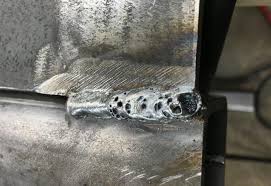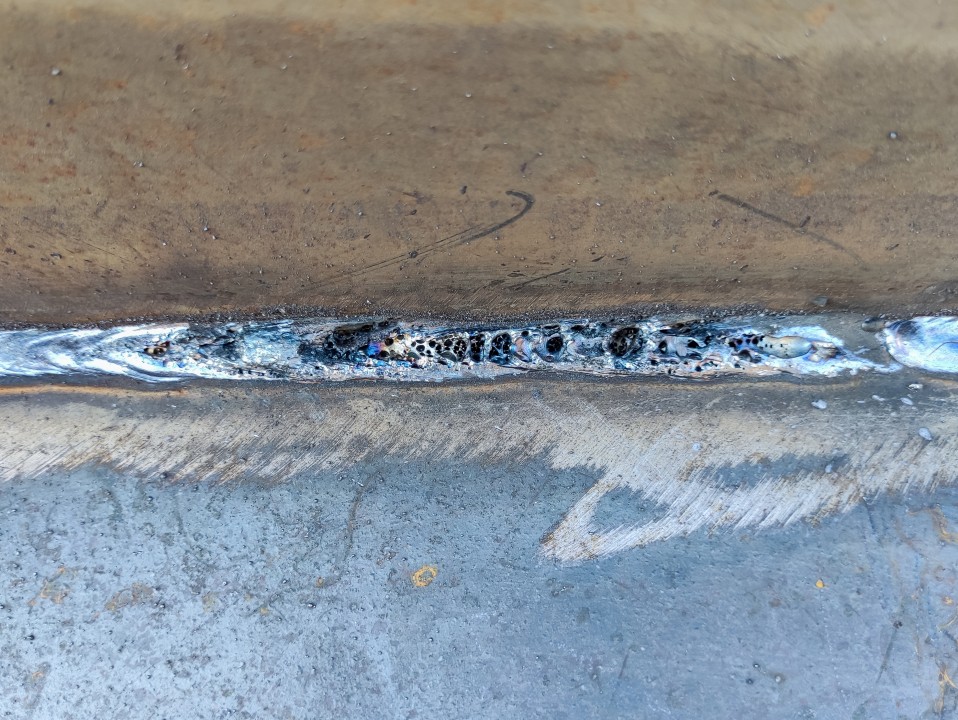Comprehending Porosity in Welding: Exploring Reasons, Effects, and Prevention Strategies
As specialists in the welding market are well mindful, comprehending the reasons, impacts, and prevention strategies connected to porosity is vital for accomplishing durable and reliable welds. By delving right into the origin triggers of porosity, examining its harmful results on weld top quality, and discovering efficient prevention methods, welders can enhance their expertise and skills to produce top quality welds consistently.
Typical Root Causes Of Porosity
Contamination, in the form of dirt, grease, or rust on the welding surface area, develops gas pockets when heated up, leading to porosity in the weld. Improper protecting takes place when the shielding gas, typically used in processes like MIG and TIG welding, is incapable to completely protect the liquified weld pool from responding with the bordering air, resulting in gas entrapment and succeeding porosity. In addition, poor gas protection, typically due to inaccurate circulation rates or nozzle positioning, can leave parts of the weld unsafe, enabling porosity to create.
Effects on Weld Quality
The visibility of porosity in a weld can significantly jeopardize the overall quality and integrity of the bonded joint. Porosity within a weld develops gaps or cavities that compromise the structure, making it much more prone to cracking, rust, and mechanical failing. These spaces act as stress concentrators, decreasing the load-bearing capability of the weld and boosting the chance of premature failing under applied stress. On top of that, porosity can likewise work as prospective sites for hydrogen entrapment, additional aggravating the deterioration of the weld's mechanical residential or commercial properties.
Additionally, porosity can hinder the efficiency of non-destructive screening (NDT) methods, making it challenging to detect various other issues or gaps within the weld. This can cause considerable safety worries, specifically in critical applications where the structural integrity of the bonded parts is extremely important.

Avoidance Techniques Overview
Offered the destructive effect of porosity on weld quality, efficient avoidance strategies are critical to maintaining the structural integrity of welded joints. Among the primary avoidance techniques is detailed cleansing of the base products before welding. Pollutants such as oil, oil, corrosion, and wetness can add to porosity, so ensuring a tidy job surface is necessary. Correct storage of welding consumables in completely dry conditions is additionally important to avoid moisture absorption, which can result in gas entrapment throughout welding. Furthermore, picking the proper welding parameters, such as voltage, current, and take a trip speed, can aid minimize the danger of porosity development. Guaranteeing appropriate shielding gas circulation and coverage is an additional critical prevention strategy, as insufficient gas protection can cause atmospheric contamination and porosity. Proper welder training and accreditation are crucial for executing precautionary measures successfully and constantly. By including these prevention strategies into welding methods, the occurrence of porosity can be considerably minimized, causing stronger and much more trusted bonded joints.
Importance of Proper Protecting
Correct shielding in welding click here for info plays a crucial role in preventing atmospheric contamination and guaranteeing the integrity of welded joints. Shielding gases, such as argon, helium, or a combination of both, are generally utilized to safeguard the weld pool from reacting with aspects airborne like oxygen and nitrogen. When these reactive elements come right into contact with the hot weld swimming pool, they can trigger porosity, resulting in weak welds with reduced mechanical residential properties.

Poor protecting can cause various defects like porosity, spatter, and oxidation, jeopardizing the architectural stability of the bonded joint. Adhering to appropriate protecting practices is important to generate premium welds with marginal defects and make sure the durability and integrity of the bonded parts.
Surveillance and Control Approaches
Exactly how can welders effectively keep an eye on and manage the welding procedure to guarantee optimal results and protect against defects like porosity? One key technique is via using innovative surveillance technologies. These can include real-time tracking systems that supply responses on parameters such as voltage, current, visite site travel speed, and gas flow rates. By constantly monitoring these variables, welders can identify discrepancies from the optimal conditions and make instant modifications to protect against porosity development.

In addition, applying correct training programs for welders is necessary for keeping an eye on and managing the welding process properly. What is Porosity. Informing welders on the value of maintaining regular criteria, such as appropriate gas shielding and take a trip speed, can help stop porosity problems. Normal analyses and accreditations can additionally make certain that welders excel in tracking and controlling welding procedures
Additionally, making use of automated welding systems can improve monitoring and control abilities. These systems can exactly manage welding specifications, lowering the probability of human mistake and making certain consistent weld top quality. By integrating innovative monitoring modern technologies, training programs, and automated systems, welders can efficiently monitor and manage the welding procedure to lessen porosity defects and accomplish high-quality welds.
Verdict
